What Are Pool Bank Shots? 5 Pool Bank Shot Tips for Beginners
Pool bank shots are not only fascinating to watch but also an indispensable constituent of any great pool player’s arsenal. When it comes to newer players, unearthing a good understanding of how to make bank shots in pool is among the first and foremost steps toward more advanced pool playing. Here, we run through some of the best pool tips for beginners. While this billboard skill takes practice, starting with these tips, you will be close to spotting pool angles and shooting like a pro. Above all, with them, anybody can learn about bank shots with much more ease.
What Are Pool Bank Shots?

Bank shots mean any shot that involves the use of a rail to assist in pocketing an object ball. Several bank shots hit this ball to a cushion first or start by using the cushion before hitting the ball. Either this or that, as you can execute the bank shots, you will have made significant progress in your chance to win.
5 Pool Bank Shot Tips for Beginners
1. Think of equal angles
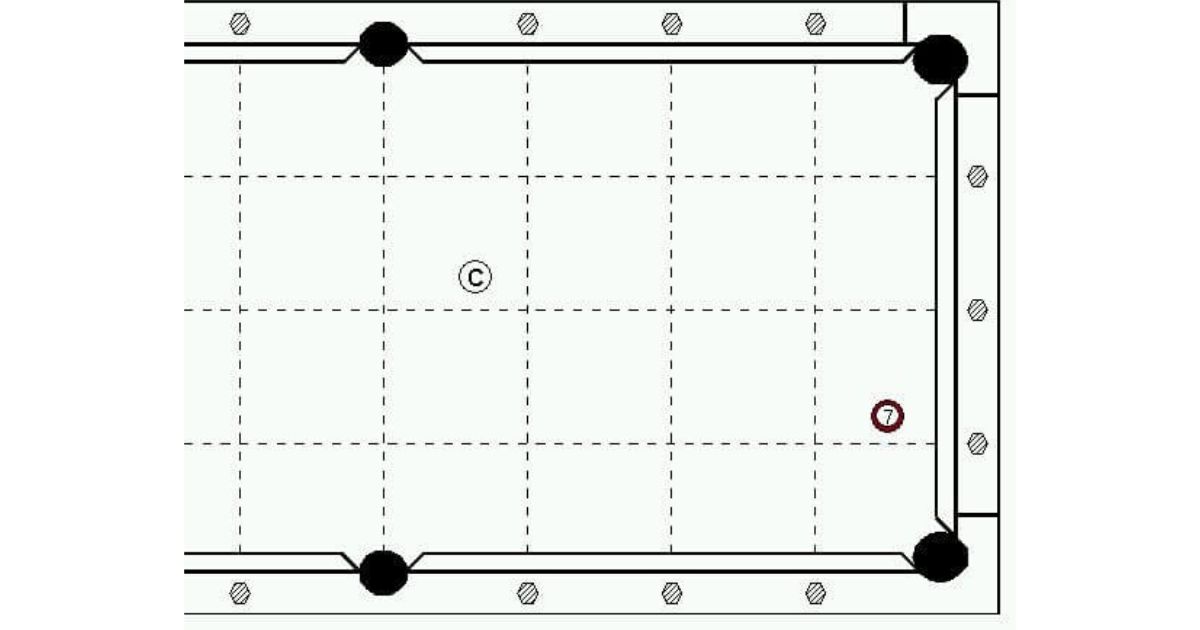
In the pool game, angles are an important factor. To have a nice pool bank shot, players need to know how to have equal angles. First thing first, consider this principle when you line up the bank shot. Usually, the object ball will bounce off the rail at almost the same angle as it went into that rail. Where other elements will undeniably affect your shot, this essential method should aid in your understanding of banking.
Bear in mind that the degree of the angle will have a tendency of being more drastic if the distance is longer. Long pool bank shots, even at tight pool angles, will appear more extreme since the object ball moves farther across the table.
2. Watch your shot velocity

The speed of your bank shot is associated with how the rail impacts the angle. As you know, the rails are cushioned and will rebound your shot in various ways based on how hard you hit the cue ball.
Generally speaking, harder pool bank shots (and more quickly moving ball) will reduce the pool angles, whereas softer and less fast shots will increase the angles. Remember that these are fundamentals, and elements such as English, spin, and other methods of cue banks will support fine-tuning the shots. But on the other hand, as soon as you are familiar with the “angle in, angle out” guiding principle, try out shot speeds to truly apprehend yourself to bank shots.
3. Measure the cross pocket line
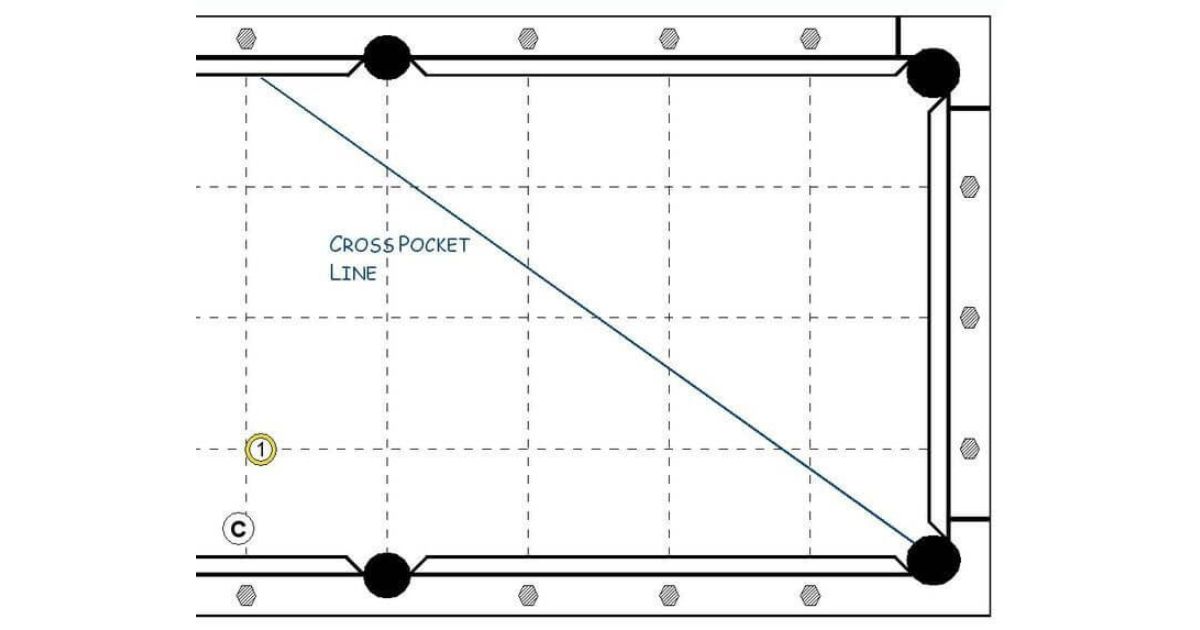
You are recommended to drop an imaginary line into the pocket at the corner from where the cushion opposite the to-be-banked ball center. See to it that instead of the back of the pocket on its leather or plastic surface, you aim across the pocket at the spot with the largest allowable tolerance limit where cloth and empty space meet (aka its opening). Simply put, where the blue line changes to black space from the white surface.
Keep in mind that the opening center of the pocket is where you will aim every ball for all 6 pockets. This spot gains the highest odds of scoring on a miss, providing maximum space on the left and right line sides alike to make bank shots in the pool.
4. Build the ball pocket line
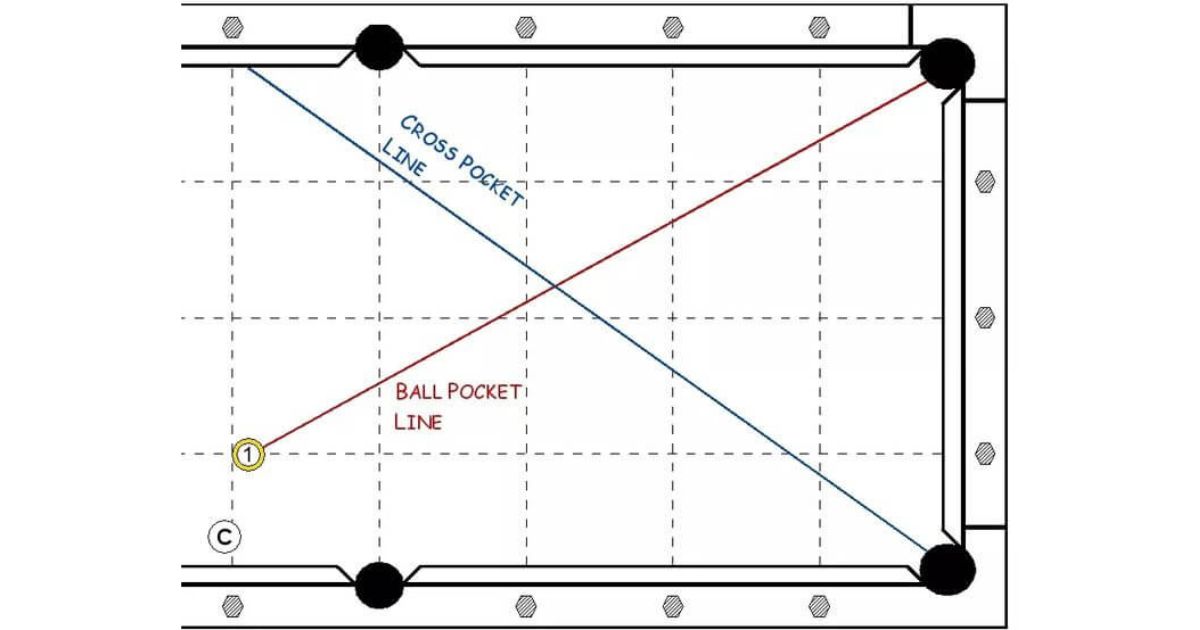
Now that you know how to use the cross pocket line to aim bank shots for sinking the object ball in the pocket, let’s learn about drawing the ball pocketing line. The 2nd line is simple to pick because it never fails to join the cross pocket line, forming an “X”. Build this 2nd imaginary line (demonstrated in red in the image) from the object ball into the opposite pocket for the desired pool bank shot (the one ball will be pocketed where the blue line approaches the pocket opposite).
Again, this technique depends much on what you already get the hang of – the way of aiming balls into the pocket center. Align every bank line and angle leveraging the pocket bottom plus cushions where they and the table cloth pass across each other. Lining up on the rail tops will result in a false measurement perspective.
As you might be interested: How to curve a pool ball
5. Review the bank stroke line
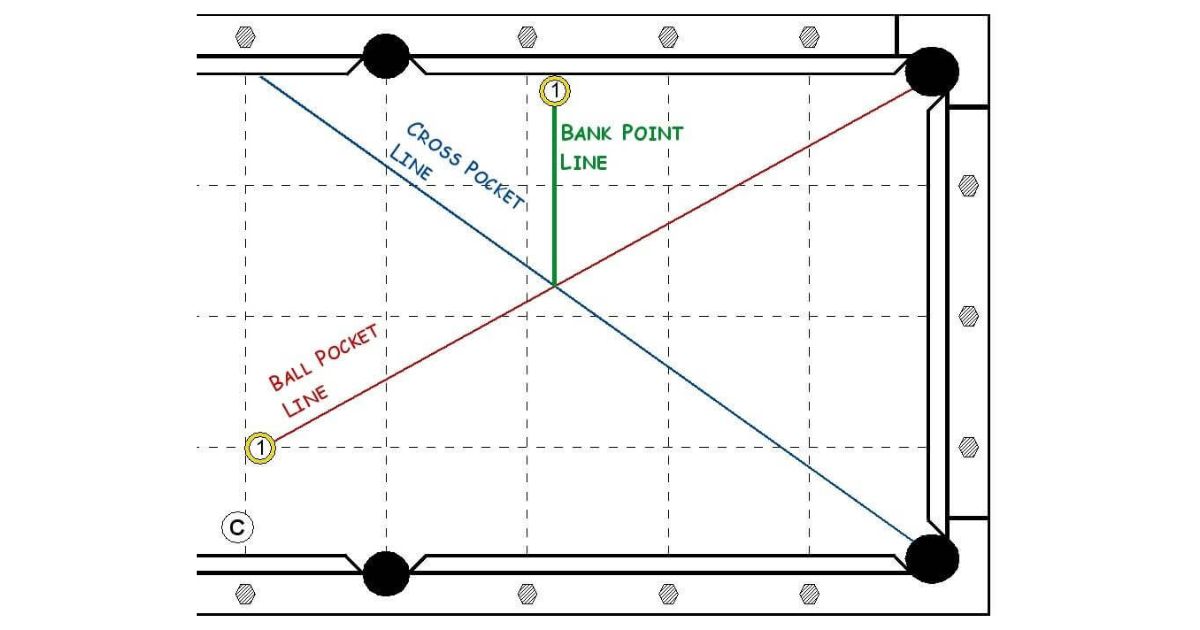
To decide the bank point line for your bank shots, you should split the cross pocket lines and ball pocketing lines where they intersect. By building a perpendicular straight line to the cushion where the cross pocket line passes across the ball pocketing line, you will more easily calculate the spot where you desire the 1-ball to strike over the pool table before fascinatingly changing direction.
In other words, you drop a line from where the cross pocket line and the ball pocket line meets (aka the X), and the 1-ball will contact the cushion on the shot. It is a good idea to hold a cue over your imaginary ball pocketing or cross pocket line to help with your thinking.
Related Questions
1. What is spot check?
Usually, pool tables come with dots on the rails between the pockets. They are not only for decoration! Pool bank shots are a product of geometry plus physics, and these dots exist to help – they are even referred to as “sights.” Thanks to the diamond or round-shaped sights, you can spot pool angles and get the focal point for where you should aim along the rail. Make use of them well!
2. What is the difference between kick shots and bank shots?
Bank shots are when the cue ball is hit into the object ball, which follows up with hitting off the rail and sinking in the pocket. Kick shots are at times you hit the cue ball into the rail and move on to pocketing the object ball.
3. Should I try and make multiple pool bank shots in a row?
Yes. One after another. You have the choice to do 5 or 10, subject to how comfortable you get and your level. The more you experiment with the table, the better you will understand how it plays and how exciting you can become with the shots.
4. Is there any tutorials that I can watch to learn about pool bank shots?
Yes! Dave Pearson – the Ginger Wizard – also the founder of Pearson Cues has a quick tutorial for you here: Winning Shots with Dave Pearson – Bank Shots. You can now learn from the best billiard expert in the world!
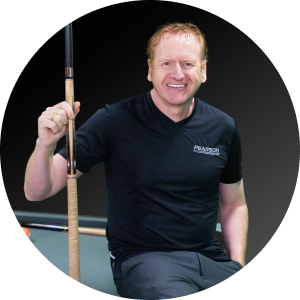
Dave Pearson
Dave Pearson, the world's leading pool entertainer, is renowned globally as the ultimate exhibition player.
Boasting 20 world records endorsed by the prestigious Guinness Book of World Records, Dave established a legendary history in the sport industry.
